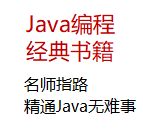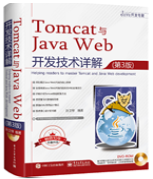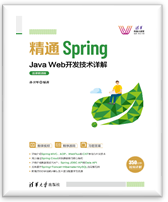|
|
从Request对象中可以获取各种路径信息,以下例子:
假设请求的页面是index.jsp,项目是WebDemo,则在index.jsp中获取有关request对象的各种路径信息如下
String path = request.getContextPath();
String basePath = request.getScheme()+ "://"+request.getServerName()+ ":"+request.getServerPort()+path+ "/";
String remoteAddress=request.getRemoteAddr();
String servletPath=request.getServletPath();
String realPath=request.getRealPath( "/");
String remoteUser=request.getRemoteUser();
String requestURI=request.getRequestURI();
out.println( "path:"+path+ "<br>");
out.println( "basePath:"+basePath+ "<br>");
out.println( "remoteAddr:"+remoteAddress+ "<br>");
out.println( "servletPath:"+servletPath+ "<br>");
out.println( "realPath:"+realPath+ "<br>");
out.println( "remoteUser:"+remoteUser+ "<br>");
out.println( "requestURI:"+requestURI+ "<br>"); |
结果:
path:/WebDemo
basePath:http: //localhost:8683/WebDemo/
remoteAddr: 127.0. 0.1
servletPath:/index.jsp
realPath:D:\apache-tomcat- 6.0. 13\webapps\WebDemo\
remoteUser: null
requestURI:/WebDemo/index.jsp
从上不难看出request各个对应方法所代表的含义
从request获取各种路径总结:
request.getRealPath( "url"); //虚拟目录映射为实际目录
request.getRealPath( "./"); //网页所在的目录
request.getRealPath( "../"); //网页所在目录的上一层目录 |
假定你的web application(web应用)名称为news,你的浏览器中输入请求路径:http: //localhost:8080/uploading/load.jsp
request.getContextPath() => /uploading
request.getServletPath() => /load.jsp
request.getRequestURL() => http: //localhost:8080/uploading/load.jsp
request.getRealPath( "/") => F:\learn\.metadata\.plugins\org.eclipse.wst.server.core\tmp0\wtpwebapps\uploading\ |
现在request.getRealPath( "/") 这个方法已经不推荐使用了
可以使用
| ServletContext.getRealPath(java.lang.String) |
request.getSession().getServletContext().getRealPath() 得到工程文件的实际物理路径,也就是绝对地址
HttpServletRequest 的以下两种方法都只能得到不包含参数的请求url
String url = request.getRequestURI();
StringBuffer url_buffer = request.getRequestURL();
HttpServletRequest 的以上两种方法的区别如下:
1 前者返回相对路径,后者返回完整路径
2 前者返回string ,后者返回stringbuffer
得到完整请求url可以通过如下方法,getQueryString()得到的是url后面的参数串,和前者相加就是带参数的请求路径了
String queryString = request.getQueryString();
String fullPath = url + queryString; // 或者是url_buffer.toString()+queryString;
----------------------------
原文链接:https://www.cnblogs.com/zhwl/p/3625360.html
程序猿的技术大观园:www.javathinker.net
[这个贴子最后由 flybird 在 2020-03-30 23:26:50 重新编辑]
|
|

















